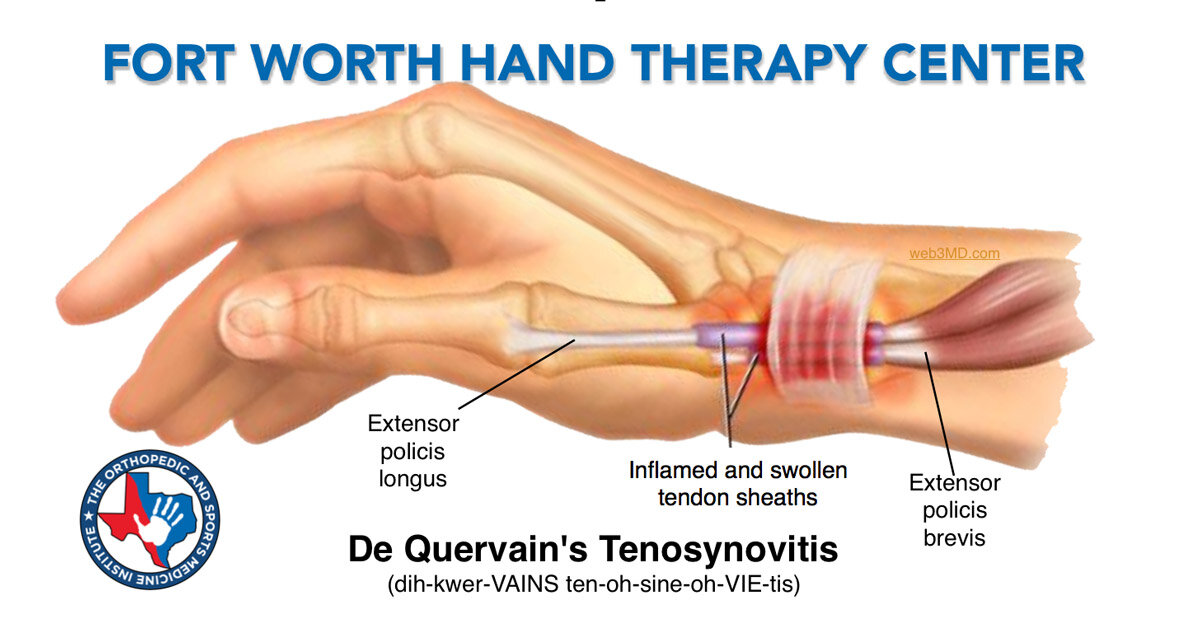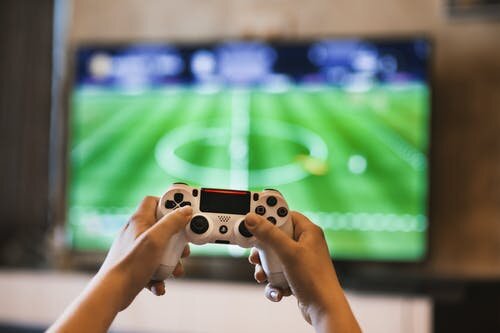Gamer's Thumb Walkthrough
When I’m about to put in a long console gaming session I can expect a couple things: lots of trash talking amongst friends and sore thumbs (aka Gamer’s Thumb). The latter being the one I’m here to help you with today and the former can be improved by watching some toxic Twitch streamers.
What is Gamer’s Thumb?
Gamer’s thumb, outside of the gaming community, is known as DeQuervain’s Syndrome (DQ).DQ is the inflammation/irritation of the tendons of the thumb and the sheaths that surround them. The synovial sheath surrounds the tendons and provides a lubricating frictionless envelope for the tendons to move through freely.
The two tendons involved are the Abductor Pollicis Longus (APL) and Extensor Pollicis Brevis (EPB). The most common place for the irritation to occur is where they cross over from the wrist to the thumb.
If you take your thumb and draw it back towards you, these two tendons will pop up to create a small divot. This divot is known as the anatomical snuffbox for pretty obvious reasons. If you need clarification just ask a responsible adult what the term "snuffbox" means.
How Does Gamer’s Thumb Occur?
DQ usually occurs gradually over time as the tendons chronically become inflamed and irritated. The irritation is caused by chronic repetitive motions such as controller joystick movement, typing, playing piano, or texting.
As the irritation continues, you will begin to feel a burning, sharp, and sore sensation over the area. Trigger points (knots) typically start to form around the surrounding musculature along with adhesions around the sheaths. Both of these cause restrictions with normal movement mechanics of the thumb, which in turn causes you to play in pain, and most notably poorly.
Do I have Gamer’s Thumb?
Finkelstein’s Test
Performing the above actions on a regular basis coupled with pain in the anatomical snuffbox are strong indicators. A few more ways to self-diagnose are:
Restricted “squeaky” sounding movements when moving your thumb
Pain with range of motion (movement) of the thumb
Pain with ulnar deviation of the wrist (movement of the hand to the pinky side of the hand)
Decreased grip strength
Pain with extended use of a controller or hot keys on the side of your mouse
Treatment for Gamer’s Thumb
Chances are if you are reading this article you are suffering from thumb pain while gaming or computer work. If after performing some preliminary self-diagnosis you have found some positives, then it’s time to do some self-care.
Some of the listed topics below will need to be performed by a trained medical professional and I’ll indicate which ones below with a *. \
Withstanding the Load- The demand on your soft tissues may not seem like a lot but those small motions of clicking and key spamming add up. You’re feeling “pain” because the tissue can’t handle the load you are asking of it. You have to build endurance within the tissue just like athletes do when they train.
Do you think an Olympic athlete is surprised when they start to have pain as they increase their training? No! So why would playing/grinding more not lead us to the same answer?
We achieve this by performing tissue and activity-specific exercises for your platform of choice. Every game and platform is different when it comes to soft tissue demands. Therefore routine and care must be specific to you as a player. I’ve included a video below with some of my favorites. More on my Youtube channel here.
Rest- It’s easier said than done I know, especially if your livelihood depends on performing those aggravating tasks. The thought process here should be to look at long-term goals rather than short-term.
What I mean is that if you want to continue to perform those tasks later in your career, then you need to back off a bit and learn how to manage the load. I.E. play up to pain or performance issues then perform any of the following below. It’s not just simply rest here but rather a transition to other treatment.
Icing and Ice massage- Icing the area will help decrease the inflammation and also have a numbing effect. Ice massage is performed by having a small bag of ice and rubbing the area, while moving the thumb through simple ranges of motion. I also like to put some lotion on the area to help even more with the icing process.
Bracing- I’ve seen numerous braces for DQ that immobilize the thumb and I’m not a fan. Immobilizing an inflamed/injured area will decrease the blood supply to the area, atrophy the musculature, and provide an environment for adhesion formation.
Kinesiotaping*- If you need bracing I believe that Kinesiotaping is the way to go. Rock Tape provides stability to the area, edema control, and still allows you to move your thumb.
Manual Therapy*- Using manual therapy helps break up adhesions within the area and mobilize the soft tissue. In my experience manual therapy also allows me to move the tendons past the range of motion that you would normally stop at.
As mean as that may sound, doing this helps with the reparative process significantly. I’m a big fan of ART, FDM, and gua sha style manual therapy.
Mobilization of the joint*- Mobilization provides similar benefits as manual therapy but also is beneficial to the joint itself. The idea here is simple, “Joints are happy when they are moving.” If you cease to move the joint from the tendinous pain, then you’ll experience stiff pain from the lack of thumb movement. Once again, if you keep the body moving it will thank you.
Exercises for Gamer’s Thumb
The first (and usually hardest) goal is to do something about your pain from the list above. Once you have tackled that hurdle, the next step is to build up the endurance of the area. You can accomplish this by performing exercises daily and warming up prior to gaming/working. The only way to prevent DQ from coming back is to implement an exercise routine. This is the long-term play.
Here is a solid warm-up routine before jumping into a gaming session. While this a full-body routine there are hand and wrist components mixed in.
Wrapping Up
As we finish up this article I want to hammer home once again that you have to be proactive to doing this self-care or seeking out care for your DQ.
The motions that led you to this point are most likely the same ones that help you earn a living. To continue making a living and enjoying gaming recreationally, you need to make a step in the right direction.






